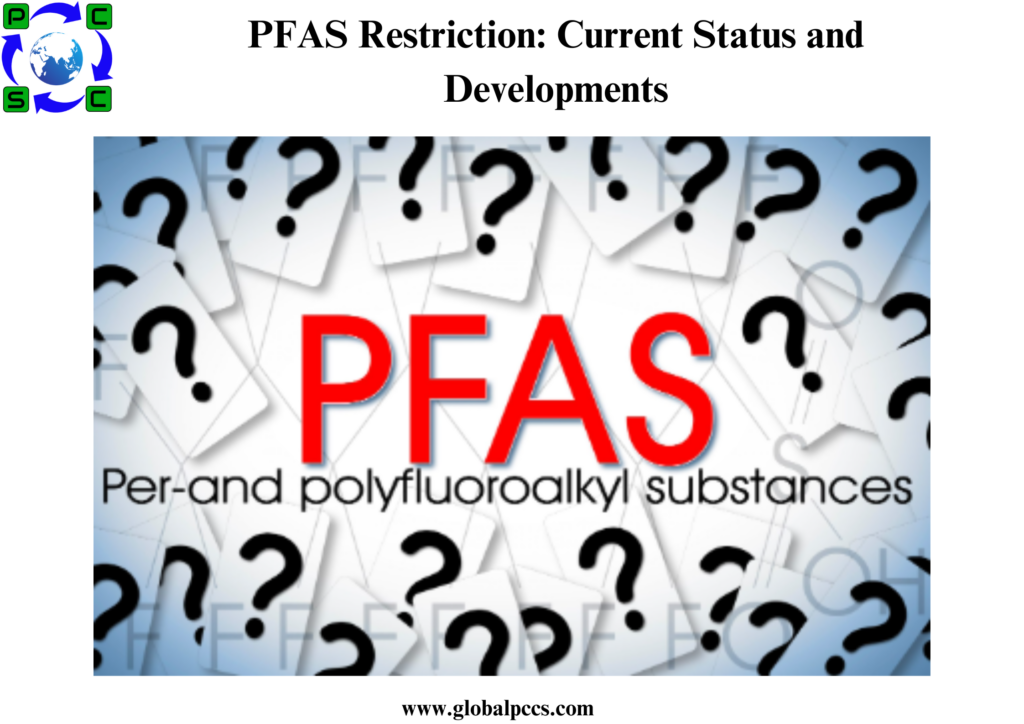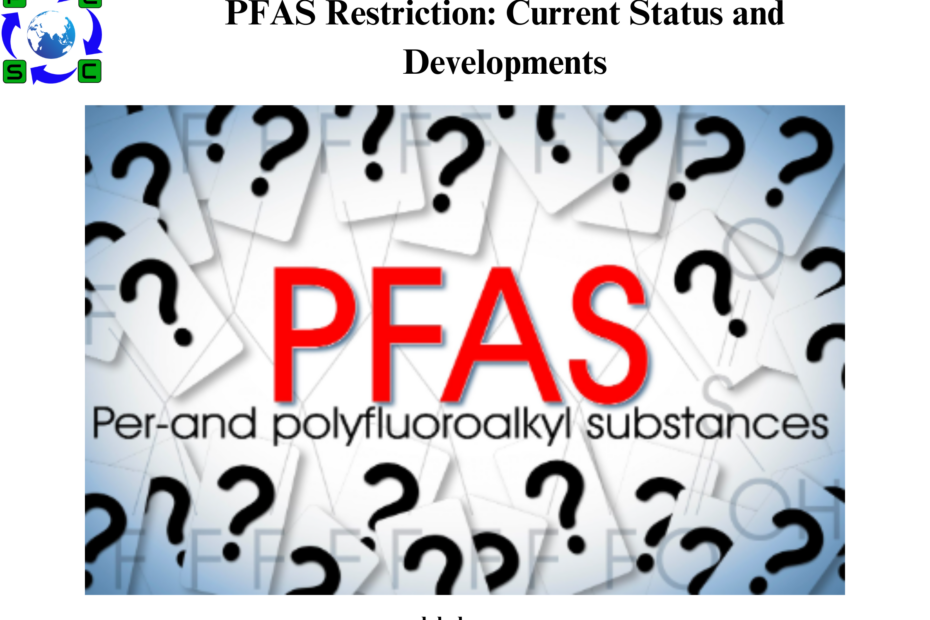 Introduction
Introduction
Per- and polyfluoroalkyl substances (PFAS) are a large class of thousands of synthetic chemicals that are used throughout society. However, they are increasingly detected as environmental pollutants and some are linked to negative effects on human health.
They all contain carbon-fluorine bonds, which are one of the strongest chemical bonds in organic chemistry. This means that they resist degradation when used and also in the environment. Most PFAS are also easily transported in the environment covering long distances away from the source of their release.
PFAS have been frequently observed to contaminate groundwater, surface water and soil. Cleaning up polluted sites is technically difficult and costly. If releases continue, they will continue to accumulate in the environment, drinking water and food.
Insights
Per- and polyfluoroalkyl substances (PFAS) restrictions in Europe have been updated by the European Chemicals Agency (ECHA) and authorities from Denmark, Germany, the Netherlands, Norway, and Sweden.
More than 5,600 scientific and technical comments from third parties were received during the 2023 consultation, and they are still being taken into consideration by the five authorities (Dossier Submitters) and ECHA’s scientific committees for Risk Assessment (RAC) and Socio-Economic Analysis (SEAC).
The information on PFAS is gradually updated and improved by the Dossier Submitters with the assistance of this consultation input. Additionally, it has assisted in identifying uses that were not explicitly mentioned in the original proposal; these are being added to sector assessments that already exist or grouped into new sectors as necessary.
Applications for sealing, technical textiles, printing, and other medical fields like pharmaceutical packaging and excipients are a few examples.
In addition to a complete ban or a ban with time-limited exceptions, other restriction options are also being explored. Instead of a ban, an alternate solution might, for instance, include terms permitting the continued production, marketing, or use of PFAS.
This factor is especially important for applications and industries where there is evidence that a ban might have disproportionately negative socioeconomic effects. These substitute choices are being contemplated for applications such as, but not restricted to:
- Batteries
- Fuel cells and
- Electrolysers.
Each alternative option’s proportionality will be assessed and contrasted with the first two restriction options: a complete ban or a ban with time-limited exceptions. The proposal is being continuously assessed by ECHA committees with the help of all this updated data.
Current Actions and Measures in Progress
The REACH restriction dossier for PFAS is undergoing an evidence-based scientific review by RAC and SEAC. The goal is to provide high-caliber, transparent, and independent opinions as quickly as possible while guaranteeing that the committees conduct a comprehensive scientific review as well as the chance for outsiders to offer suggestions.
The committees have chosen to evaluate the restriction dossier using a sector-based approach due to its extensive scope, which covers over 10,000 substances used in over 14 sectors.
This makes it possible to properly pay attention to the unique characteristics of the uses, risks, and corresponding restriction options.
The RAC has so far come to a tentative conclusion regarding the PFAS hazard assessment. Additionally, the RAC and SEAC have reached preliminary conclusions on five sectors: mining and petroleum, cosmetics, ski wax, metal plating and the production of metal products, consumer mixtures and other consumer articles, and cosmetics. These have a provisional status because final conclusions regarding the entire proposal won’t be possible until both committees have discussed every sector. The final consolidated opinion from both RAC and SEAC, which ECHA will forward to the European Commission, will include these findings.
Third-party consultation
During the six-month consultation on the restricted document in 2023, interested third parties submitted over 5,600 scientific and technical comments. The risks and hazards of PFAS, their uses throughout the EU and EEA, the availability and suitability of substitutes, and the socioeconomic effects of the proposed restriction are all covered in detail in these comments, which are currently being carefully considered and assessed. The input from the consultation helps the Dossier Submitters to progressively update and improve the information on PFAS in the form of a Background Document. It also helps to identify uses that were not yet specifically named in the initial restriction dossier, incorporating these into existing sector assessments or creating additional sectors, as necessary. This further information feeds into the committees’ evaluation of the restriction dossier.
Examples of newly identified uses are:
- Sealing applications: a broad range of fluoropolymer uses in consumer, professional and industrial applications, including seals, pipe lining, gaskets, valve parts, etc.
- Technical textiles: uses of PFAS in for example high-performance membranes, medical applications that are not covered in medical devices, outdoor technical textiles (like tarps).
- Printing applications: permanent parts and consumables for printing applications.
- Other medical applications (e.g., packaging and excipients for pharmaceuticals).
Fluoropolymers are one example of a group of PFAS with high interest for stakeholders and the consultation has brought further insight into the availability of alternatives for certain uses of these polymers, technical and organisational measures to minimise their emissions in the environment and potential socio-economic impacts of a ban of their manufacture, placing on the market and use. Specific attention is being given to this group by all actors in the opinion development process.
Further restriction options being considered
It is crucial to remember that the Dossier Submitters aim to reduce PFAS emissions in order to prevent additional PFAS accumulation in the environment and ensuing exposure to both persons and the environment. A complete ban or a ban with time-limited exceptions (where alternatives are not yet available) are the two restriction options included in the original PFAS restriction document. The latter method, as suggested by the dossier submitters, would enable a systematic substitution process when substitutes became available without endangering the availability of the uses, such as completing the green energy transition.
In addition to the requirement for suitable derogations, the additional information presented in the 2023 consultation is leading to consideration of whether restriction options other than a ban may achieve the regulatory aim to significantly reduce the PFAS emissions throughout their life cycle. This evaluation is especially pertinent to the uses and industries for which data was presented to show that a ban would likely have disproportionate socioeconomic effects (for instance, since technical substitution is not yet predictable). Additionally, it enhances the limitation proposal’s viability for particular uses.
The two restriction alternatives that have already been presented will be contrasted to potential additional possibilities, wherein an alternative to a ban may be suggested for certain purposes. These could be requirements that must be fulfilled for the manufacturing, distribution, or use of PFAS until substitutes are found, or they could be requirements that must be fulfilled to permit the continuing manufacture, distribution, or use of PFAS in lieu of a ban.
The use of PFAS in specific industrial applications, such as batteries, fuel cells, and electrolysers, is presently being evaluated. If such information has been raised during the consultation, the same evaluation will also be conducted for other industries, such as semiconductors and medical devices. Furthermore, data presented during the consultation might serve as the foundation for several limitation choices for fluoropolymers in production, service life, and end of life, for example, while still adhering to the proposal’s goal of minimizing environmental emissions.
All considerations are still subject to scrutiny by the RAC and SEAC and subsequently during the decision-making phase by the European Commission, with Member States.
Next steps
The opinion development work will further progress during 2025 and will lead to an opinion of the RAC and a draft opinion of the SEAC. A consultation will be held afterwards on the draft opinion of the SEAC. This will provide an opportunity for all interested third parties to provide relevant information regarding socio economic aspects to be considered in the final SEAC opinion.








 Authorised IMDS & CDX Training & Consulting partner for
Authorised IMDS & CDX Training & Consulting partner for





